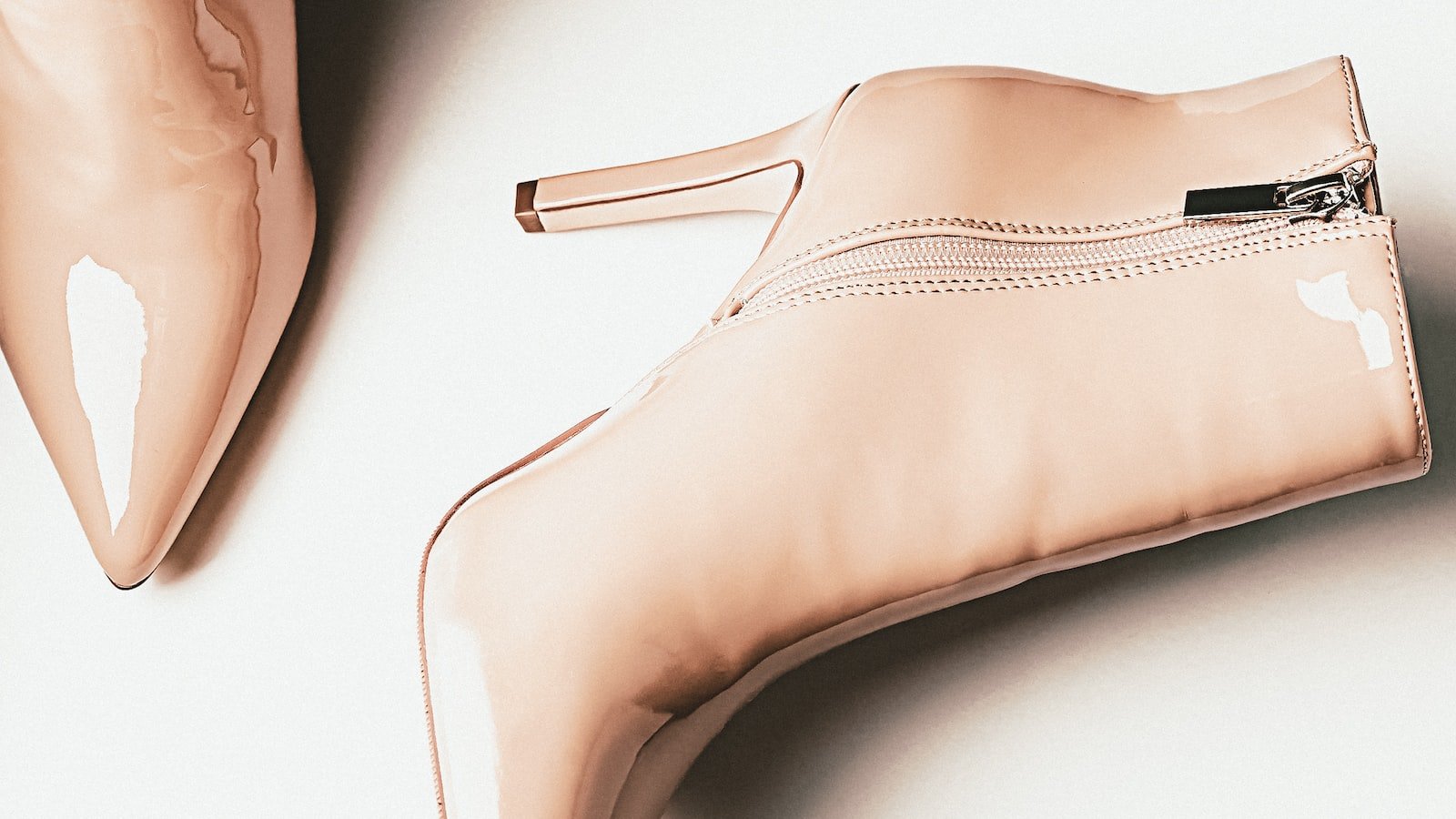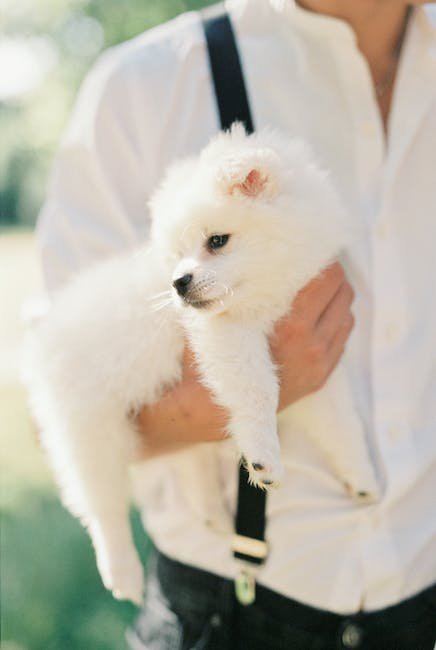When little Fido comes bounding into your life, it’s only natural to shower him with love and cuddles. But as your adorable bundle of fur grows into a mischievous puppy, those innocent antics can quickly turn into a challenge. Enter the art of heel training—a fundamental skill that will transform Fido from a playful whirlwind into a well-mannered companion. Whether you’re a first-time puppy parent or an experienced dog lover looking to expand your knowledge, mastering the basics of heel training is an essential step towards a harmonious relationship with your furry friend. So, buckle up those leashes and get ready to embark on a journey that will have your pup strutting by your side with grace and obedience.
Table of Contents
- Understanding the Importance of Heel Training for Puppies
- Establishing a Solid Foundation: Teaching the Proper Heel Position
- Effective Techniques to Reinforce Heel Training in Puppies
- Common Challenges and Solutions in Heel Training for Puppies
- Mastering Heel Training: Advanced Tips and Tricks
- Q&A
- In Conclusion

Understanding the Importance of Heel Training for Puppies
Heel training is an essential aspect of raising a well-behaved and obedient puppy. Teaching your furry friend to walk calmly and comfortably beside you on a leash not only ensures their safety but also enhances your bond with them. Through a structured training regimen, you can instill good habits and discipline in your puppy, setting them up for success.
When it comes to heel training, consistency is key. By using positive reinforcement techniques, such as treats and praise, you can condition your puppy to associate walking at your side with rewards. Start by getting your puppy’s attention and taking a step forward. If they begin to pull or go off-track, gently guide them back into position. Repeat this process until walking by your side becomes second nature to them.
During heel training, it’s important to be patient and understanding. Remember, your puppy is still learning and may require some time to grasp the concept fully. Break down the training into small, manageable steps, gradually increasing the difficulty as your puppy becomes more proficient. Celebrate their successes and never punish them for mistakes or setbacks. With dedication and consistency, your puppy will become a master of heel training in no time!

Establishing a Solid Foundation: Teaching the Proper Heel Position
Teaching the Proper Heel Position
Establishing a solid foundation is crucial in any endeavor, and dog training is no exception. When it comes to teaching your furry friend the proper heel position, you are not just ensuring a well-behaved pet but also building a strong bond between you and your canine companion.
Here are some essential tips to help you train your dog to maintain the proper heel position:
- Start indoors: Begin the training in a quiet and distraction-free environment. This will allow your dog to focus solely on the task at hand.
- Use positive reinforcement: Praise and reward your dog for walking by your side in the correct heel position. This positive reinforcement will encourage them to repeat the desired behavior.
- Utilize a marker word: Choose a word or phrase such as “heel” or “walk nicely” to signal your dog to maintain the proper position. Consistently using this marker word will help your pet understand what is expected of them.
- Practice consistency and patience: Training takes time, so be patient with your dog. Consistency is key in reinforcing the proper heel position. Gradually increase the duration and difficulty of the training sessions as your dog becomes more proficient.
- Consider using visual aids: Some dogs benefit from visual cues to understand the desired position. You can use a target stick or place a boundary line on the ground to help guide your dog’s movement.
Remember, teaching the proper heel position is not just about physical alignment; it is about building trust and understanding between you and your four-legged friend. With perseverance and a positive approach, you will lay a solid foundation for a well-mannered and attentive companion.

Effective Techniques to Reinforce Heel Training in Puppies
When it comes to training puppies, reinforcing proper heel behavior is essential for both their safety and your sanity. To make your heel training techniques more effective, consider incorporating the following strategies:
- Consistency is key: Dogs thrive on routines, so establishing a consistent training schedule is paramount. Set aside dedicated time each day to work on heel training, ensuring that you stick to the same time and location whenever possible.
- Start slow and gradually increase difficulty: Just like humans, puppies need to master the basics before moving on to more complex actions. Begin training in low-distraction environments and gradually advance to areas with more stimuli, such as parks or busy streets.
- Use positive reinforcement: Engage in abundant praise, treats, and affection whenever your puppy walks nicely at your side. By associating the correct behavior with positive outcomes, you’ll increase their desire to repeat it.
- Appropriate leash and collar: Investing in a well-fitting leash and collar is crucial for successful heel training. Opt for a sturdy leash that allows you to maintain control without causing discomfort to your pup.
- Be patient: Remember that puppies, like children, learn at their own pace. Stay patient and avoid becoming frustrated whenever your training sessions don’t go as planned. Consistency and perseverance will ultimately yield the desired results.
By implementing these effective techniques in your heel training endeavors, you’ll be well on your way to teaching your puppy the skills they need to become a well-behaved and obedient companion.

Common Challenges and Solutions in Heel Training for Puppies
When it comes to teaching puppies how to properly walk on a leash and heel, there are a few common challenges that every dog owner may face. These challenges can be frustrating, but with the right solutions and patience, you can overcome them and help your furry friend become an expert heeler.
1. Pulling on the leash: One of the most common challenges during heel training is when puppies constantly pull on the leash, making walks feel like a tug-of-war. To address this issue, it’s important to consistently reinforce the “heel” command and reward them with treats and praise when they walk nicely by your side. Utilizing a harness or leash designed to discourage pulling can also be helpful in redirecting their attention and promoting good behavior.
2. Easily distracted: Puppies are naturally curious and can get easily distracted, which makes it challenging to keep their focus during heel training sessions. To tackle this obstacle, it’s crucial to train in a quiet and controlled environment at first, gradually introducing distractions such as other dogs or noises. Using high-value treats as a reward for maintaining focus and engaging in heel position can help keep their attention and reinforce the desired behavior.
3. Lacking consistency: Consistency is the key to successful heel training. Many puppy owners may struggle with keeping a consistent training routine, which can hinder progress. Establishing a regular training schedule and dedicating short, frequent sessions to work on heel training will help your puppy understand what is expected from them. Additionally, providing verbal cues or incorporating hand signals can help reinforce consistency and improve communication between you and your furry companion.
Mastering Heel Training: Advanced Tips and Tricks
Advanced Tips and Tricks for Mastering Heel Training
When it comes to mastering heel training, there are a few advanced tips and tricks that can take your dog’s obedience to the next level. These techniques require patience, consistency, and a deep understanding of your canine companion’s behavior. Ready to take your heel training to new heights? Let’s dive into some advanced techniques!
1. Perfecting the “Automatic Sit”
One advanced technique that can greatly enhance the precision of your dog’s heel training is perfecting the “automatic sit” command. This involves teaching your pup to sit as soon as you stop moving, without needing a verbal cue. It requires gradual progress, starting with rewarding your dog for sitting as soon as you stop. Over time, increase the duration your dog needs to sit before issuing the reward. Eventually, your furry friend will understand that stopping means an automatic sit, keeping them focused and in perfect heel position.
2. Incorporating Distractions
To truly master heel training, your dog needs to be able to maintain focus even when faced with distractions. Introduce controlled distractions during your training sessions, such as tempting toys, other animals, or food. Start with minor distractions and gradually increase their difficulty, always rewarding your dog’s ability to stay in heel position. This will strengthen their obedience and ensure they remain attentive to your commands, no matter the environment or distractions that may arise.
3. Utilizing Variable Length Leash
Another useful trick for advanced heel training is incorporating a variable length leash. Begin with a short leash, gradually increasing the length over time. The variable length leash provides different levels of control, challenging your dog to stay in heel position regardless of the leash’s length. It helps them learn to be more attentive to your movements instead of relying solely on physical guidance. Remember to reward your dog’s successful heel positioning with each adjustment in leash length, reinforcing their understanding of staying close and connected.
With these advanced tips and tricks, you’ll be well on your way to mastering heel training with your furry companion. Remember, consistency and positive reinforcement are key to achieving the desired results. Happy training!
Q&A
Why is heel training important for puppies?
Heel training is important for puppies because it teaches them to walk politely on a leash without pulling. It also helps establish a bond between you and your puppy, and promotes better control and communication.
When should I start heel training my puppy?
You can start heel training your puppy as early as 8 weeks old. However, it’s important to keep training sessions short and fun, focusing on positive reinforcement and rewarding good behavior.
How can I teach my puppy to walk beside me?
To teach your puppy to walk beside you, start by rewarding them with treats for walking by your side. Use a short leash and keep your puppy close to your side, gradually increasing the distance you walk together.
What should I do if my puppy pulls while walking?
If your puppy pulls while walking, stop walking immediately. Stand still and wait until they release the tension on the leash. Once they relax and come back to your side, reward them and continue walking.
How long does it take for a puppy to learn to heel?
The time it takes for a puppy to learn to heel can vary. It depends on the breed, individual puppy, and consistency of training. With regular practice and positive reinforcement, most puppies can learn to heel within a few weeks to a couple of months.
Can I use punishment to teach my puppy to heel?
It’s not recommended to use punishment when teaching a puppy to heel. Positive reinforcement, such as treats, praise, and rewards, is much more effective. Punishment can create fear and anxiety, hindering the learning process and damaging the trust between you and your puppy.
What are some common mistakes to avoid during heel training?
Some common mistakes to avoid during heel training include pulling on the leash, using harsh corrections, and overtraining. Remember to be patient, consistent, and use positive reinforcement to encourage your puppy’s cooperation.
What other commands should my puppy know before starting heel training?
Before starting heel training, it’s beneficial for your puppy to have a good grasp of basic commands such as “sit,” “stay,” and “come.” These commands will provide a foundation for further training and make the heel training process smoother.
Can I hire a professional trainer to help with my puppy’s heel training?
Yes, hiring a professional trainer can be a great option if you’re struggling with your puppy’s heel training. They can provide guidance, tips, and personalized advice based on your puppy’s specific needs, accelerating the training process and ensuring better results.
In Conclusion
As we conclude this paw-some journey into the basics of heel training for puppies, let us remember that patience and consistency are key when molding these adorable little balls of fur into well-behaved companions. By establishing a strong foundation of trust and mutual understanding, we open the doors to a world of beautifully orchestrated walks, where dogs and humans stride together in perfect harmony. Take time to cherish each moment of this training process, for it is simultaneously an act of love and a demonstration of our commitment to nurturing a remarkable bond with our furry friends. So, go forth and embark on this exciting adventure, armed with knowledge, determination, and an abundance of treats. Your puppy will thank you with every graceful step they take by your side, forging a friendship that will withstand the test of time. Remember, with every successful heel, the journey becomes a delightful dance where both you and your puppy can pirouette through life joyfully. Happy training!
As an affiliate, my content may feature links to products I personally use and recommend. By taking action, like subscribing or making a purchase, you’ll be supporting my work and fueling my taco cravings at the same time. Win-win, right?
Want to read more? Check out our Affiliate Disclosure page.